SUNCHOKES
aka: jerusalem artichoke
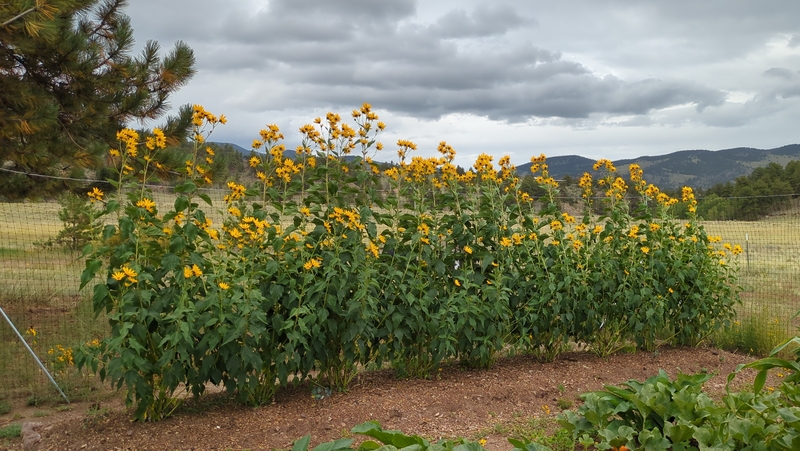
Two names for the same thing, I prefer the name “Sunchokes” which compliments the beautiful sunflower-like blooms that appear late in the season and differentiates better between these and globe artichokes. I’ve heard about these for quite some time, but had never eaten them. After learning that they would likely grow well here quite easily, I wanted to eat some first, before growing! I finally found some at the market, brought them home, sauteed them, and they were delicious. On to the garden plan for 2025.
It was a little hard to find them to purchase for seed, but I located a seller in Paonia, CO, just about 100 miles west of my location, High Desert Seed+Gardens. I called to ask several questions about the sunchokes, and the owner was very helpful answering how much to order, whether they would survive the winter here, etc. I ordered one pound of their “Top Star Jerusalem Artichoke”.
One pound of sunchokes was enough for 9 plants, 2’ apart, just the size of the row I’d created at the north end of the fenced area we originally created for winter squash.
- 4/23: Planted 9 sunchokes.
- 5/17-22: Plants sprouted.
- 8/19: Plants were 6-7’ tall
- 9/3: Flowers began to bloom.
- 9/30: Flowers died back.
See the progression of growth to harvest below.





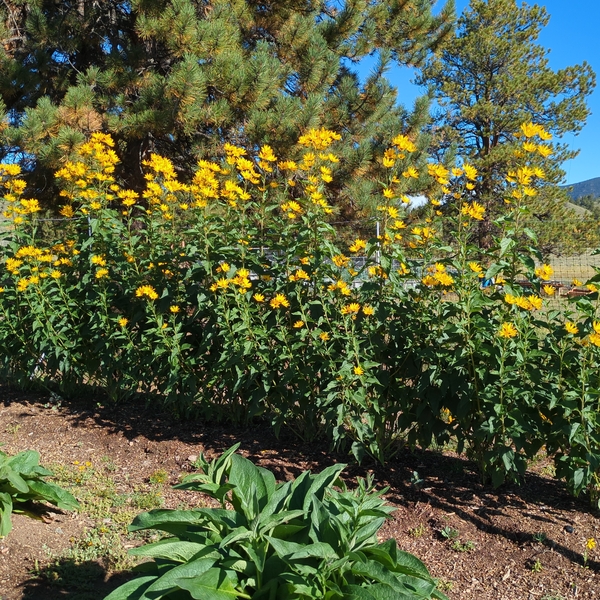




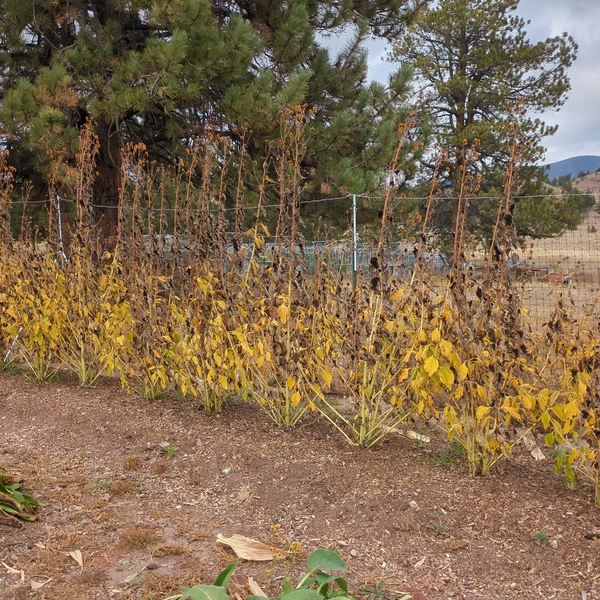
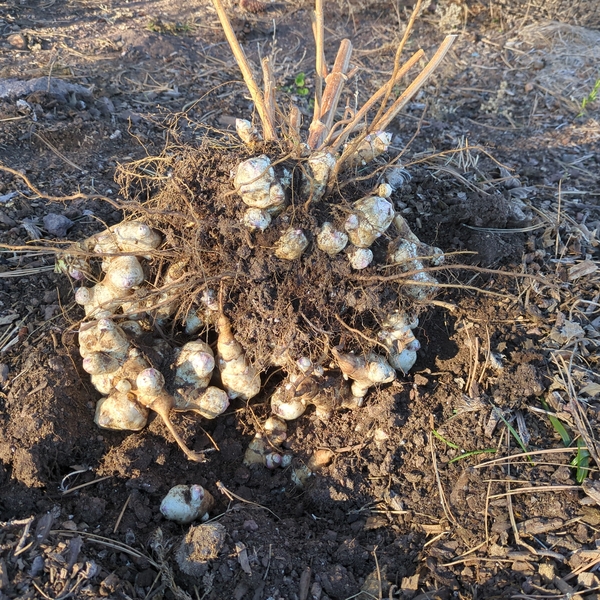
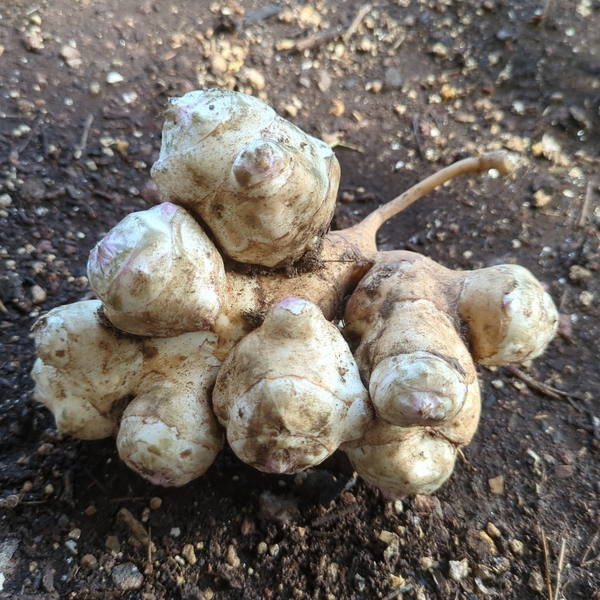

As of 11/7, two plants have been harvested. The two plants yielded 12.6 lbs, so an average of 6.3 lbs per plant! I plan to harvest the remaining plants sometime before the ground is too hard to dig, but I want to leave them there as long as possible to prolong their storage life.
Sunchokes, like potatoes, should be a one-time investment. Buy them and plant them once, replant a few in the ground in the fall or save some to plant out in the spring each year, and you’ll have another harvest the next year, the next, and the next! At this time I plan to plant a few in the fall & mulch them well to see if they survive our harsh winter. I’ll also save enough to plant in the spring in case the fall-planted ones don’t make it. I’m just unsure how well they will keep in our “cold closet”, but will know in a few months.
I’ve heard that these may be deer-resistant, but I am unsure. We planted ours in a fenced area to be on the safe side.
Companions: I’d heard that good companions for sunchokes might be pole beans and nasturtiums. I tried both and neither grew well. Perhaps I planted them too close to the sunchokes.
They are delicious sauteed or air fried. Now my challenge is to learn to cook them in various ways. I’m particularly interested in learning to cook them in order to lessen the effects of the gas they produce from digestion. My research has suggested the following to reduce gassiness:
- Leaving them in the ground through some freezing temps should convert the starches to fructose, which will result in less gassiness.
- Storage also helps because over time the starches naturally convert to fructose.
- Cooking them more slowly over a longer period of time, rather than quick cooking methods should reduce the gas.
- Adding some acid such as lemon juice, vinegar or cream of tarter should help.
- Taking “Beano” at the start of the meal to prevent gas may help some people, but keep in mind that this is intended to treat the gassiness from beans, broccoli, etc. (I have found that it helps in my case.)
- Taking simethicone (found in Gas-X) may help reduce the gas bubbles after they begin to form for some people. (I haven’t tried this.)
I’ll have to provide updates later, after more experimentation.
So far growing Sunchokes is a success here in the mountains. If you’ve never tried them, you must. If you appreciate a beautiful plant that grows readily with a one-time cost, grow these.

